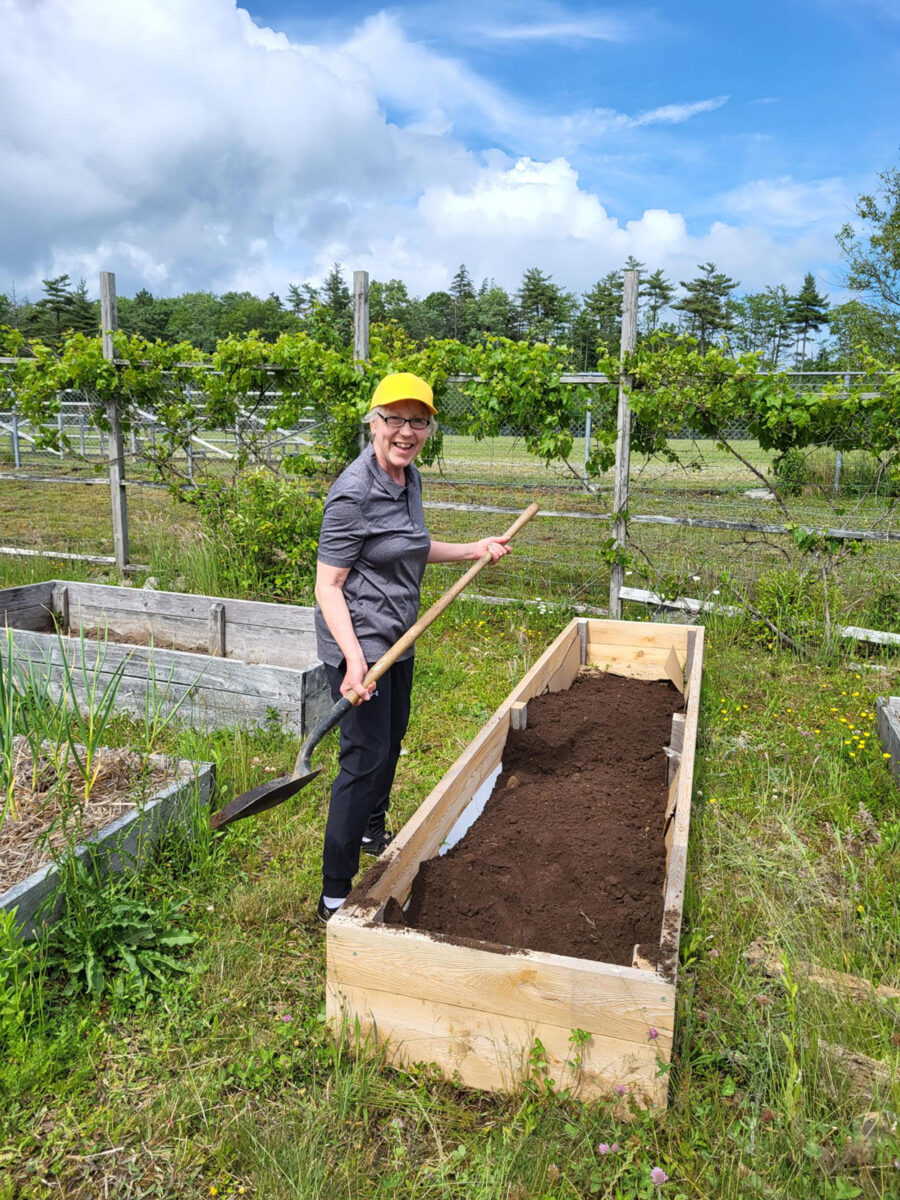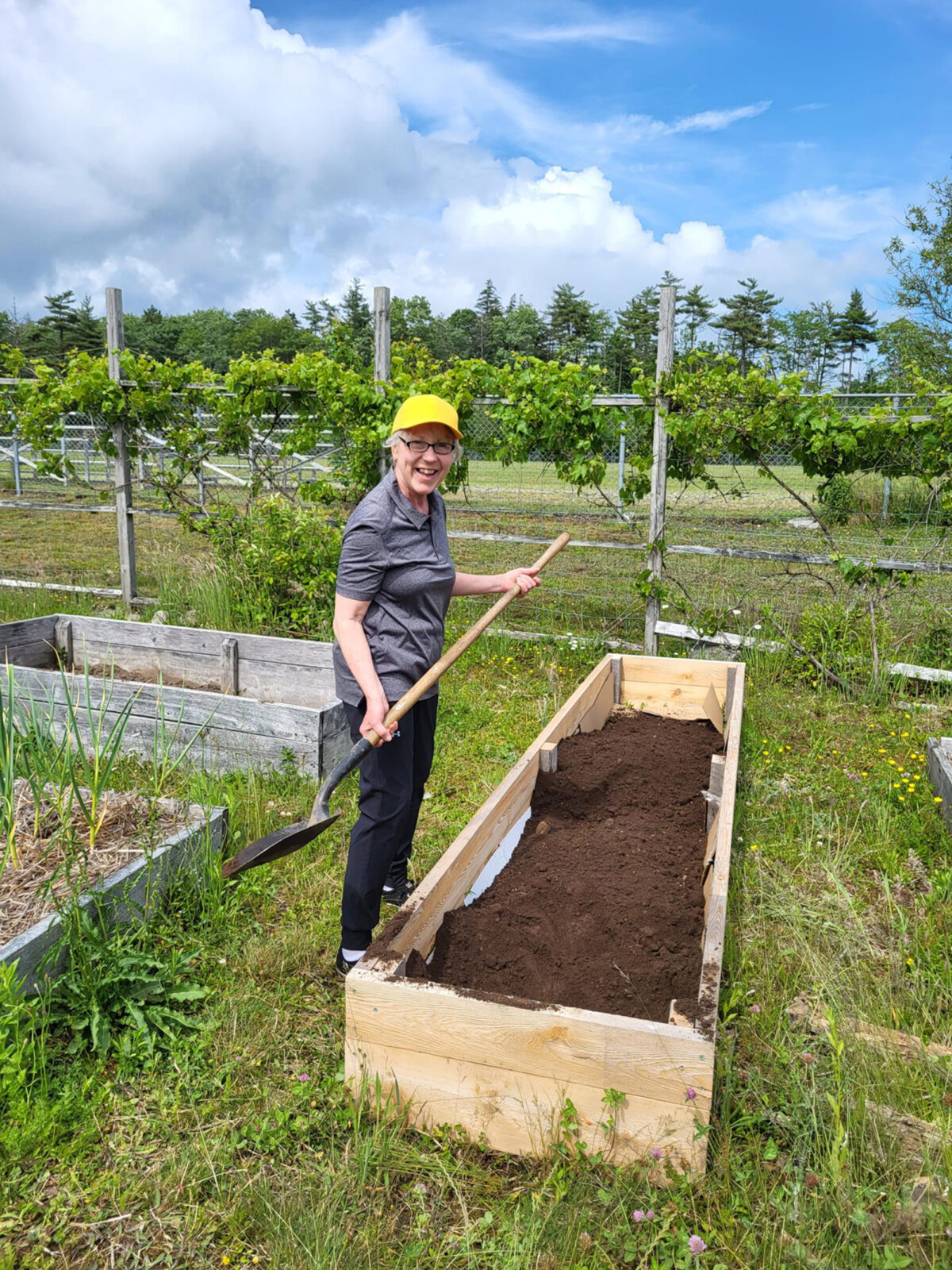Group effort produces new community garden

Seeds of the idea for a community garden in Shelburne, Nova Scotia, were sown about eight years ago at a conference hosted by the Centre for Local Prosperity, and then —quite literally — in a plot of land beside Shelburne District High School in the spring of 2023. Thanks to citizen engagement, a team of volunteer gardeners is already reaping far more than produce.
“I am so proud of what our group has accomplished in such a short period of time,” says Shelburne Warden Penny Smith, an active volunteer and vice-president of the newly formed non-profit Community Garden and Food share Association of Shelburne County. “I’m optimistically looking forward to the potential for food hubs to build a more robust, local food system across Nova Scotia.”
John Davis, president of the Community Garden and Food share Association, says the new community garden has too many supporters to name, but he acknowledges Warden Smith’s role in promoting the area’s long-term resilience and self-sufficiency.
He also applauds the contribution made by Mary Thompson, principal for Nova Scotia Community College’s Burridge, Shelburne, and Digby campuses. Thompson introduced a service learning program that sees college students work with the Municipality of Shelburne to explore ways to create greater food sustainability.
After simmering for a number of years, plans for the community garden began to heat up when a meeting took place in December. Next came a survey to see who might be interested in helping with the project, and interest poured in from the local high school, First Nations, staff at the agricultural exhibition and members of the broader community.
“This project brings the people together and fosters the idea of being more self sufficient when it comes to accessing healthy food,” says Thompson. “If COVID has taught us anything, it is how the supply chain is affected when there is a crisis. Even without a pandemic, skyrocketing prices make it more difficult for people to eat healthy foods, and marginalized citizens get hit the hardest.”
Things have moved quickly since that December meeting. The Centre for Local Prosperity provided funding to purchase supplies and build raised beds, and the local council approved a request to situate the garden and an accessible greenhouse on about three acres of municipal land adjacent to Shelburne District High School.
The garden’s proximity to the high school comes with many advantages, such as experiential learning for students and opportunities for them to be mentored by volunteer gardeners, farmers and agricultural experts. The central location will also help when it comes to getting volunteers and community gardeners to and from the garden as well as for distributing foods grown in the garden and greenhouse.
“Sou’West Nova Transit Association is working with our group to assist in distribution,” says Davis. “The plan is to raise money to pay for this service, but in the meantime, the company is helping with deliveries along some of its regular routes.”
Organizers know that the longterm sustainability of Shelburne’s community garden will depend on more than building raised beds, planting seeds and distributing produce.
They have put in a grant application to Agriculture Canada and plans are well underway for educational presentations on how to grow, harvest and preserve food.
Support from NSCC Shelburne will include relevant courses and programs through the continuing education program, use of campus spaces, cooperative education placements for students, and support through NSCC’s applied research program.
“It really is about partnerships,” says Thompson. “Coming up with a vision is one thing. Developing realistic steps to achieve that vision is something else entirely.”
As executive director for the Centre for Local Prosperity, Robert Cervelli has been an invaluable resource in defining these steps. “It is part of Nova Scotia’s cultural DNA to have gardens and farms and roadside markets,” he says. “The plan for Shelburne County, in addition to a community garden and greenhouse, is to have a mobile team that will help residents with everything from revitalizing a dormant garden to propagating seeds and installing raised beds.”
According to Cervelli, any municipality in Nova Scotia could benefit from a similar strategy, but outlying areas would benefit most. “While certain areas in the province are rich in food resources, others, such as Shelburne County, are veritable food deserts,” he explains. “Residents have to drive some distance to obtain their food, and shopping is often limited to only one store. Supply chain disruptions and production issues can cause general anxiety.”
For Davis, the garden, greenhouse and gardening mentors offer a timely way to address food insecurity.
“It was very different several generations ago when Nova Scotians
caught their own fish, grew their own food, and had a family cow and a hunting rifle,” he says.
“What I find absolutely outrageous is that in 2023, one in four Nova Scotians is food-insecure. This is an issue that our community is determined to address.”
Interested in starting a community garden in your area? Contact John Davis, President of Shelburne’s Community Garden and Food share Association at johndavis527@gmail.com.




